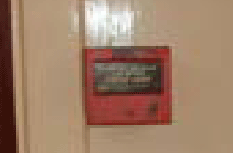When it comes to fire safety in the workplace, three steps must be carried out:
- Look around your workplace and eliminate the hazards
- Install a fire detection and alarm system to give early warning
- Prepare an evacuation plan & practice it regularly
There are three types of fire safety controls:
- Active controls
- Passive controls
- Management controls
Active controls
The purpose of active controls are:
- To alert occupants to emergency conditions
- To initiate emergency response
- To enable occupants extinguish small fires
- To ensure defined and visible route of escape
- To ensure a constant supply of water
Equipment types include:
- Fire detection & alarm systems
- Escape/emergency lighting
- Fire extinguishers
- Hose reels
- Hydrants
- Fixed fire systems
Detection & alarm systems
- Must be installed serviced and maintained to IS 3218:1989
- Must be mains powered with battery backup
- Fire alarm panel must be checked for faults daily
- Weekly checks
- Three monthly check by a competent person certified
- 12 monthly check by a competent person certified
- Retain records
Break glass units

Emergency lighting
- Escape lighting
- Must be installed serviced and maintained to IS 3217:1989
- Inspect weekly
- Three monthly check by a competent person certified
- 12 month check by a competent person certified
- Retain records
Emergency exit signs


S.I. no. 132,1995- Safety, Health and Welfare at Work (Signs) Regulations, 1995
Fire extinguishers
- Installed serviced and maintained in accordance with IS. 291- BS. 5306
- Selection based on risk assessment by supplier
- Should be positioned about one metre off the ground
- Inspect monthly for evidence that they work
- Test and inspect every 12 months by supplier
- Discharge Test: 25%
- Retain record of checks and servicing